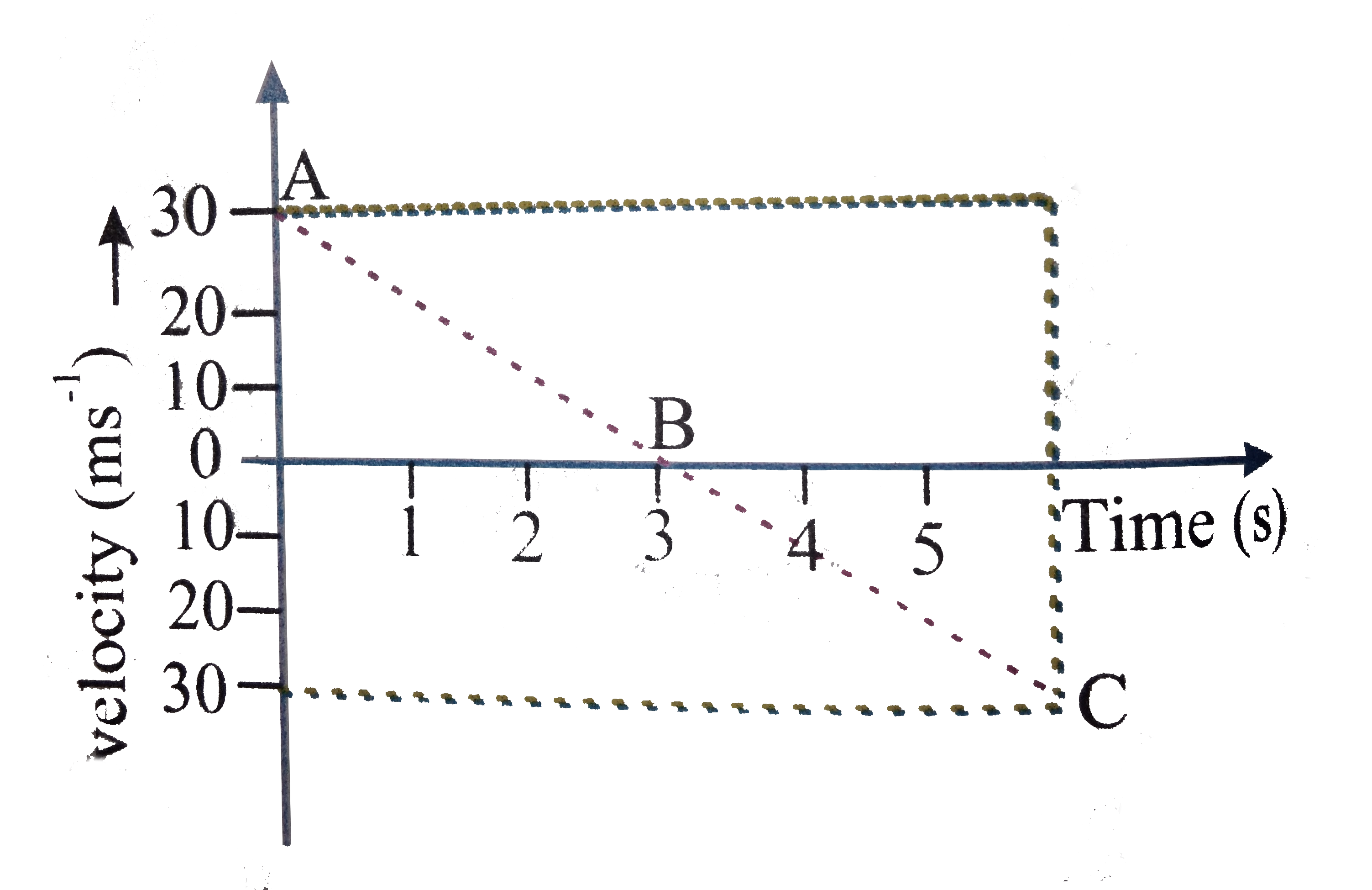A stone thrown vertically upwards with initial velocity 'u' reaches a height 'h' before coming down. Show that the time taken to go up is same as the time taken to come down.
1. Consider a stone thrown vertically upwards with initial velocity .u., reaches a maximum height .h.,
2. The time taken by a body thrown vertically upwards to reach the maximum height is called time of ascent. Let be the time of ascent.
3. After that it changes its direction and falls freely to the earth.s surface. The stone is always under the influence of acceleration due to gravity .g. acting towards. Using Newton.s third equation of motion,
Here, v = 0, a = -g, s = h
............(i)
Also, v = u + at
Here,
............... (ii)
4. After reaching the maximum height, the body begins to travel downwards and reaches the ground.
5. The time taken by a freely falling body to touch the ground is called time to descent. Let be the time of descent.
Here, Initial velocity (u) = 0, a = g and time
[from ......(i)]
TAking square root on both sides, we get,
[form ...... (ii) ]
Hence, time of ascent is equal to the time of descent.
Topper's Solved these Questions
- GRAVITATIONBOOK - UNIQUE PUBLICATIONCHAPTER - GRAVITATIONEXERCISE - INTEXT ACTIVITIES (can you call ?)
5 Videos
- GRAVITATIONBOOK - UNIQUE PUBLICATIONCHAPTER - GRAVITATIONEXERCISE - INTEXT ACTIVITIES (Use your brain power)
5 Videos
- GRAVITATIONBOOK - UNIQUE PUBLICATIONCHAPTER - GRAVITATIONEXERCISE - OBJECTIVE QUESTIONS ( True or False with reason)
3 Videos
- ENVIRONMENTAL MANAGEMENTBOOK - UNIQUE PUBLICATIONCHAPTER - ENVIRONMENTAL MANAGEMENTEXERCISE - Activity Questions
12 Videos
- HEATBOOK - UNIQUE PUBLICATIONCHAPTER - HEATEXERCISE - NUMERICALS
7 Videos
Similar Questions
A stone thrown vertically upwards with initial velocity u reaches a height h before coming down. Show that the time taken by it to go up is the same as the time taken to come down.
View SolutionA stone is thrown vertically upwards with a velocity of 4.9ms−1. Calculate : the time taken to reach the ground.
View Solution
Knowledge Check
A stone is thrown vertically upwards with an initial velocity u form the top of a tower, recahes the ground with a velocity 3u. The height of the tower is
A3u2gB4u2gC6u2gD9u2g
The velocity-time graph of a stone thrown vertically upward with an initial velocity of 30ms−1 is shown in the figure. The velocity in the upward direction is taken as positive and that in the downward direction as negative. What is the maximum height to which the stone rises?A30 mB45 mC60 mD90 mStatement 1 : An object thrown vertically up with a velocity u reaches the maximum height h after T seconds. At a time 2T seconds its velocity becomes zero.
Statement 2: An object thrown vertically up with a velocity comes back to its initial position with same magnitude of velocity but in opposite direction.ABoth statements 1 and 2 are true and statement 2 is the correct explanation of statement 1.BBoth statements 1 and 2 are true but statement 2 is not the correct explanation of statement 1.CStatement 1 is true but statement 2 is false.DStatement 1 is false but statement 2 is true.
A stone is thrown vertically upwards with a velocity of 4.9ms−1. Calculate : the time taken to reach the maximum height.
View SolutionA ball is thrown vertically upwards with a velocity of 4.9m/s Find
(i) the maximum height reached by the ball
(ii) time taken to reach the maximum height
View SolutionA stone is thown vertically upwards with a velocity of 4.9ms−1. Calculate (i) the maximum height reached (ii) the time taken to reach the maximum height (iii) the velocity with which it returns to the ground and (iv) the time taken to reach the ground.
View SolutionA ball is thrown vertically upward with a velocity u from the top of a tower. If it strikes the ground with velocity 3u, the time taken by the ball to reach the ground is
View SolutionA ball is thrown vertically upward with a velocity u from the top of a tower. If it strikes the ground with velocity 3u, the time taken by the ball to reach the ground is
View Solution
